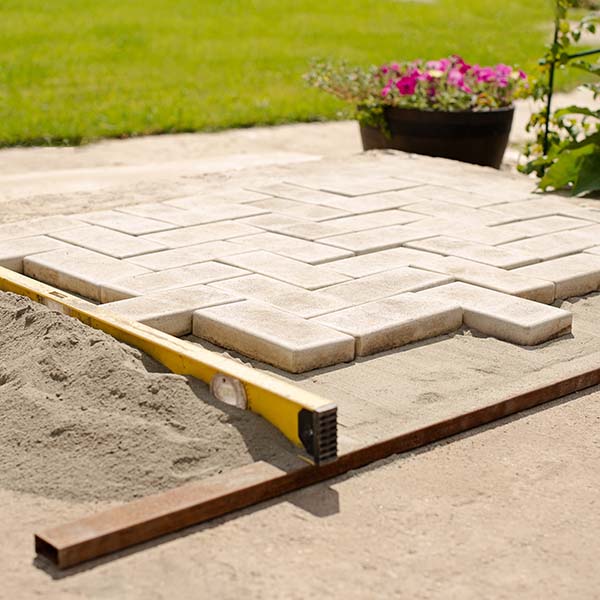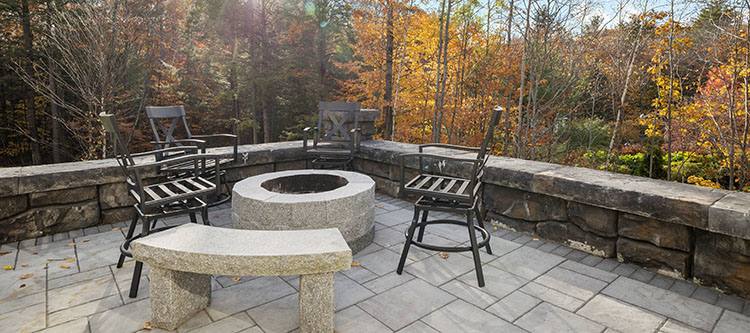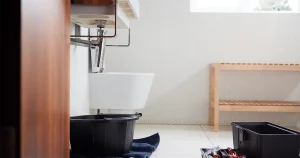In this article:
Many Massachusetts homeowners dream of turning their backyard into a useful and inviting outdoor living space. A well-designed patio provides the perfect spot for relaxing, entertaining, and enjoying the beauty of the New England seasons. But before you break ground on your dream patio, it’s crucial to understand the legalities, weather considerations, and design options specific to Massachusetts. While you are developing an arsenal of cold weather patio ideas, we want to share some insights into codes, regulations, and best practices to patio construction in Massachusetts. For additional suggestions on how to best adapt your outdoor space to New England seasons, check out our guides to patio design ideas, garden design ideas, and backyard renovation projects to plan and build your perfect backyard. Do not forget to consider sustainable landscaping solutions that may qualify for Massachusetts incentive programs.
Patio Permit Requirements in Massachusetts
The permitting process for patios in Massachusetts varies depending on your municipality. Understanding local regulations is essential to avoid delays or fines. Here’s a general overview, but always check with your local building department for the most up-to-date information.
Patio Permit Requirements:
Massachusetts State Building Code - 780 CMR
The Massachusetts State Building Code (780 CMR) outlines the minimum safety and construction standards for all buildings and structures, including patios. Generally, any patio project exceeding a specific size (often 200 square feet) or a certain height above ground will require a permit. Patios that are attached to your house will also likely need a permit. The permitting process typically involves submitting detailed plans and specifications for review by the building department. While local regulations might add additional requirements, 780 CMR serves as a foundational guideline for patio construction. Check Massachusetts Department of Public Safety Building Code & Standards for more information.
Patio Without Permit
In some cases, a permit may not be required for small, ground-level patios made of certain materials. However, these exemptions can vary significantly by municipality. It’s always best to confirm with your local building department before proceeding without a permit.
Regardless of the simplicity of the project, it is essential that you ensure safety and structural integrity of your patio. Follow the building code guidelines for: structural stability, drainage, and guardrail reuirements.

Weather-Resilient Patio Construction Solutions in MA
While enjoying your patio year-round might not be realistic in Massachusetts, there are ways to extend its usability well into fall and even create a winter patio retreat. In addition, Massachusetts State Building Code requires that patio construction focuses on safety aspects such as the strength of its foundation and building materials. Here are some creative and practical ideas for weather-resilient patios:
Base Material Selection for Patio Footing
The base material under your patio plays a vital role in stability and drainage. Opt for well-compacted crushed stone or gravel to provide a solid foundation and allow for proper drainage. The Massachusetts Building Code may not require a foundation for patios and light structures, depending on factors like soil conditions. However, that ultimately depends on whether the soil in your backyard has adequate stiffness. It is important to consult your local building department to find out requirements and recommendations for the depth and materials for your patio base footing.

Durable Patio Materials
Choose patio materials that can withstand freeze-thaw cycles and harsh weather conditions. Popular patio flooring options in Massachusetts include concrete pavers, natural stone, and composite decking. You can find more information on choosing the right pavers for your climate at the Interlocking Concrete Pavement Institute website.

Proper Patio Drainage
Ensuring proper drainage is crucial to prevent water pooling and potential damage during winter freezes. Improper patio drainage may result in many problems, such as house foundation damage, mold, and even insect infestations. A slight slope away from the house and strategically placed drains will help direct water runoff. Check the Massachusetts Uniform State Plumbing Code for proper drainage details

Finding the Local Building Code
Specific building codes and guidelines may differ from town to town. They depend on the local specifics of the geographical and climate situations in the area. Here’s how to find the relevant information.
Municipal Website
Most municipalities in Massachusetts have their building codes readily available on their official websites. Look for sections titled “Building Code,” “Zoning Regulations,” or “Department of Public Works.”
State Building Code
The Massachusetts State Building Code (780 CMR) provides a general framework for construction projects. While local amendments might exist, familiarizing yourself with the state code offers valuable insights.
Contacting the Building Department
Don’t hesitate to contact your local building department directly. They can clarify any questions you have regarding specific requirements for patios in your area and might even offer resources or helpful guidance.
Key Takeaways
Building a patio in Massachusetts is an exciting and rewarding project. A well-designed pation can significantly enhance your enjoyment of the outdoor living space. With these basic patio contruction tips, you are ready to make your dream patio a reality.
- understanding local permitting requirements
- embracing weather-resistant materials and designs
- ensuring proper structural stability and drainage
By incorporating these valuable tips, you can ensure a smooth construction process and create a beautiful and functional patio that you’ll cherish for years to come.








